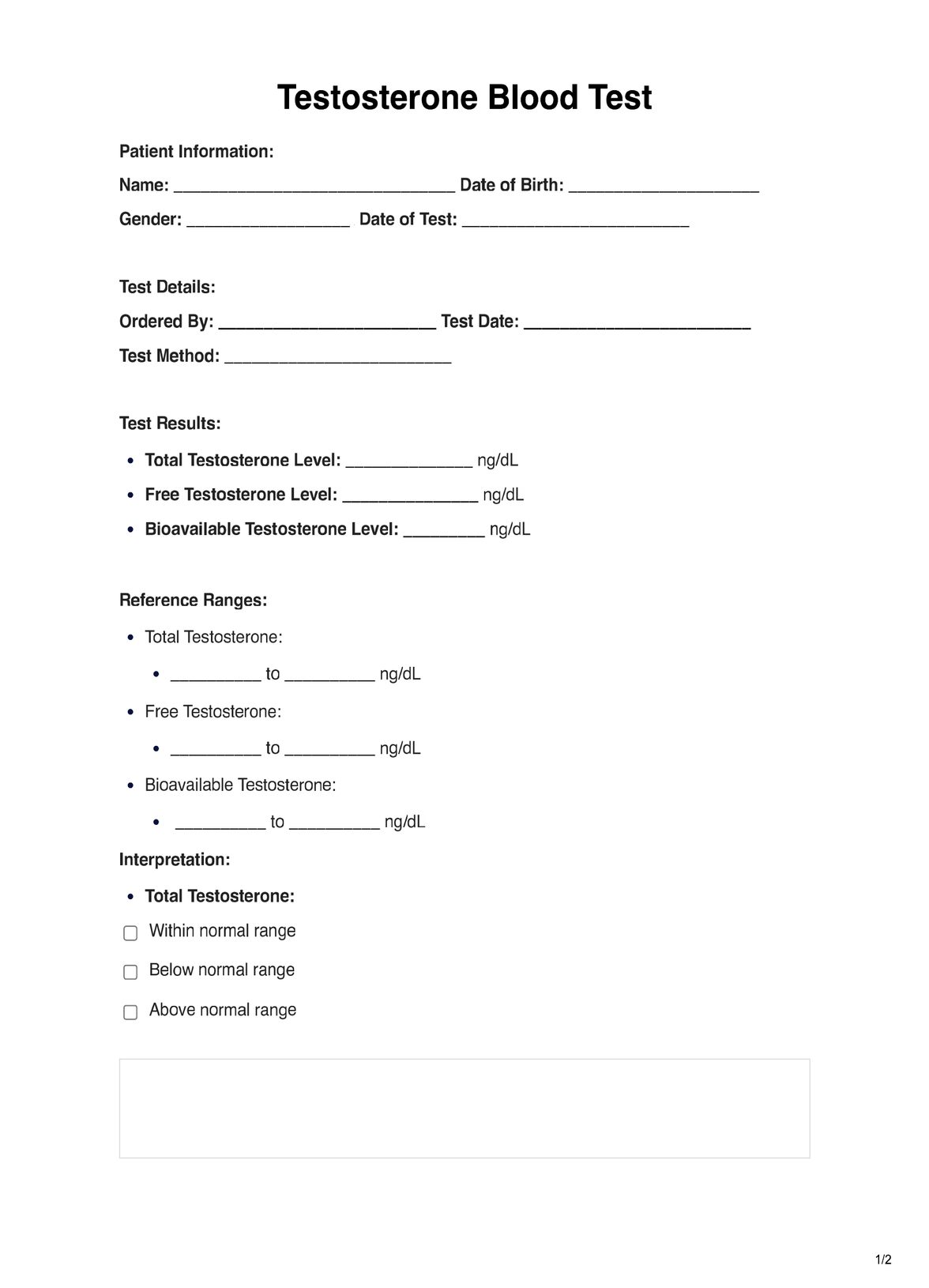Testosterone Blood Tests are used to diagnose and manage conditions related to testosterone levels, such as hypogonadism, infertility, erectile dysfunction, and hormonal imbalances in men and women.

Testosterone Blood Test
Get insights into your health with a precise Testosterone Blood Test. Monitor hormone levels for better well-being. Quick results available.
Use Template
Testosterone Blood Test Template
Commonly asked questions
A healthcare professional draws a blood sample, usually from a vein in the arm. The sample is then sent to a laboratory for analysis.
Fasting is not typically required. However, you must inform your healthcare provider about any medications or supplements you are taking, as they can affect the results.
EHR and practice management software
Get started for free
*No credit card required
Free
$0/usd
Unlimited clients
Telehealth
1GB of storage
Client portal text
Automated billing and online payments











